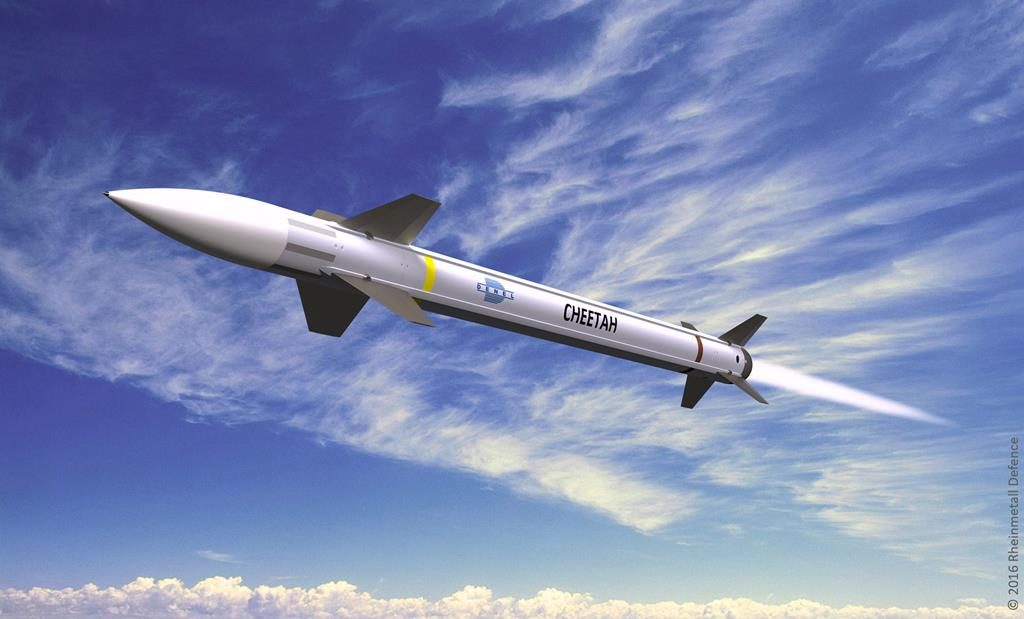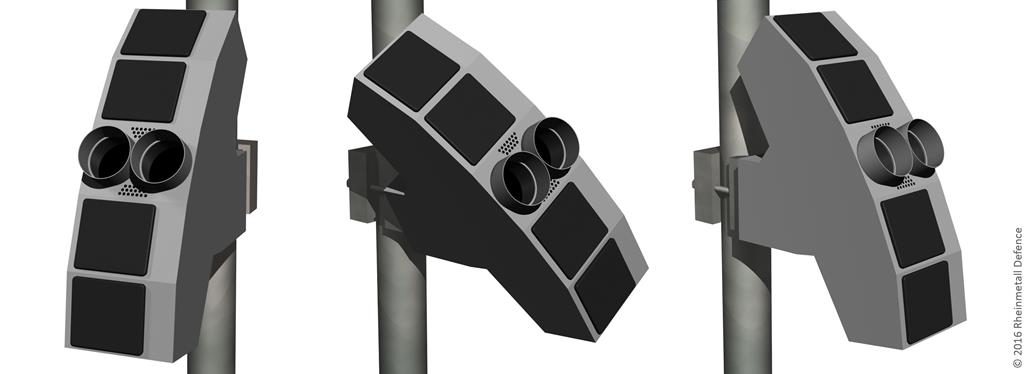Defeating RAM and UAS

Rheinmetall Air Defence (RAD) has always been at the edge of low-medium air defence systems, since it was known as Oerlikon. The company is now adapting to the new threats, as underlined bit its Vice-President, Fabian Ochsner, at the Berlin meeting. Rocket, Artillery and Mortars, RAM in short, are among main the threats for troops deployed downrange in asymmetric warfare theatres, rockets and mortars being definitely two low-cost easy-to-use systems employed by insurgents. The company has in its inventory the Skyshield Counter-RAM system, which has been acquired by the German Bundeswehr, the gun-based solution having a range of 1-1.5 km which is considered not sufficient by some countries. Among those South Africa, which issued its requirements; this led Rheinmetall to find a n alliance with Denel Dynamics of South Africa for the development of a wholly new missile, the Cheetah, which was unveiled in mid September at African Aerospace & Defence. The German group leverages its competencies, RDA providing the Skyshield fire control unit, while Rheinmetall Denel Munitions of South Africa is fully involved in the missile development, of which it will provide around 50% in financial terms. The missile is fitted with an active seeker, which allows it to autonomously direct against the intended target freeing the Skyshield sensor for guiding another missile, thus allowing to counter a saturation attack. The kill mechanism is “wholly new” according to the speaker, the warhead being developed by Rheinmetall Denel Munitions, this subsystem having already being tested. With a maximum speed of Mach 3 and a maximum lateral acceleration of 60 g, the Cheetah will be hosted in 60-missile container-launchers. Each vertical launcher will protect a 2.5 x 2.5 km area, the missile maximum range being 6 km. The new missile system integrated with the Skyshield guns will form a capable layered C-RAM system, the missile itself being in the class of self-defence SAMs and thus being capable to deal also with other types of targets.

Talking of new targets, unmanned air vehicles have become increasingly a problem not only in the military. Leveraging its experience in sensors, RAD developed the Radshield, a light, cheap and simple detection system against LSS (Low, Slow, Small) that provides a field of view of 60° in elevation and a range of 200 metres. A multisensor system, the Radshield includes a W-band radar working in the 76-77 GHz frequencies with 20° FoV in azimuth, and an LLTV camera with a 40° x 64° FoV and a 1920 x 1200 pixel sensor. An IR camera with an uncooled 640 x 480 pixel thermal sensor and a high dynamic cardioid microphone are proposed as optional. Algorithms taken from the Skyshield have been used by RAD to cope with the false alarms problem. The sensor module weighs 15 kg, it is 400 mm long, 180 mm wide and 500 mm high, and can easily be installed on a mast. Automatic alarms are send to the operator’s console, the system being optimised to detect multicopters, model aircraft, dirigibles, balloons as well as balls, this being one of the requirement from prison services. And the launch customer for the Radshield has been a Swiss prison, which selected the Rheinmetall system in early October 2016.
